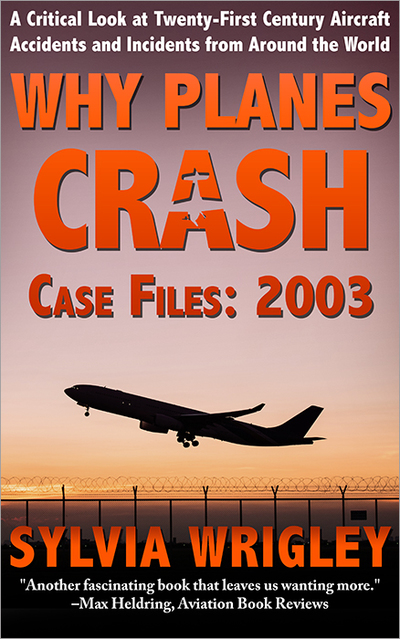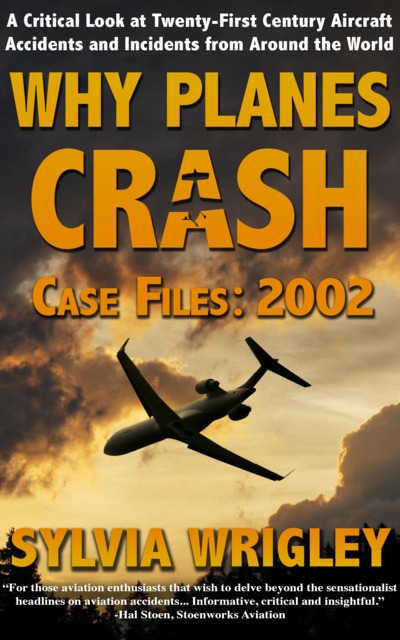Initial information on Sriwijaya Air flight 182
On the 9th of January 2021, Sriwijaya Air flight 182, a domestic scheduled passenger flight from Jakarta to Pontianak, crashed four minutes after departure.
Sriwijaya Air is an Indonesian low-cost airline based at Soekarno-Hatta International Airport in Jakarta. Founded in 2003, the airline initially offered flights between Jakarta and Pangkal Pingang before introducing new routes such as Jakarta-Palembang and Jakarta-Pontianak. In 2011, the airline began leasing twelve used Boeing 737-500s to replace its ageing 737-200 fleet. In 2015 the company placed its first order for brand new aircraft: two Boeing 737-900ER.
According to Wikipedia, Sriwijaya Air received the “Boeing International Award for Safety and Maintenance of Aircraft in 2007; however, after a quick search, this award only appears to exist in connection with this airline, so this is definitely a [citaton needed] moment.

In November 2018, Sriwijaya Air entered a partnership agreement with Garuda Indonesia, the flag carrier airline of Indonesia; however in September 2019, Garuda scrubbed its logo from the Sriwijaya fleet, citing differences in service standards. Eighteen out of thirty of the Sriwijaya fleet were grounded over airworthiness concerns(*). Full operations were reinstated after Garuda renewed the cooperation agreement to allow Sriwijaya Air to send its aircraft for maintenance at the Garuda Maintenance Facility. More details in the Strait Times: Sriwijaya Air eyes resumption of full operatoins after security maintenance services from Garuda
(*)Note: According to Wikipedia, Sriwijaya Air’s current fleet consists of six Boeing 737-500s, 11 Boeing 737-9800 and two Boeing 737-900ER, which doesn’t explain the reference to 30 aircraft in the Strait Times.

The accident aircraft was a Boeing 737-524 registration PK-CLC. It flew its first flight on the 13th of May 1994 before being delivered to Continental Airlines. Sriwijaya Air took over the aircraft in May 2012. The only incidents noted were bird strike (1994, 2004, 2005). In March 2020, at the start of the pandemic, it was parked at Surabaya for storage. In November 2020, the aircraft was inspected for an extension of its aircraft operating certificate (AOC) airworthiness certificate to December 2021 and, a few weeks later, it passed its inspection as a part of the airline’s return-to-service procedures.
Forgive me, I lost the plot on the above paragraph.
The DGCA (the Indonesian civil authority) confirmed that Sriwijaya Air went through a routine check in November 2020 and was granted an extension for the Air Operator’s Certificate (AOC) for an additional year.
The DGCA also confirmed that the Boeing 737 was inspected as a part of the return-to-service procedures as required. The aircraft’s airworthiness certificate was extended until December 2021.
The Boeing 737 resumed service on the 19th of December 2020 with its first passenger flight on the 22nd.
On that day, the Boeing 737 flew in from Pangkal Pinang, arriving at Jakarta at 12:11 local time. The next departure was scheduled for 13:40 for flight 182, a scheduled domestic flight from Jakarta to Pontianak on Borneo island. This is a 90 minute flight north-by-north-east over the Java Sea. The aircraft was only half full with sixty two on board: six crew in service, six off-duty crew who were seated in the cabin, and 50 passengers.
It is monsoon season and the weather was poor: heavy rainfall and low clouds and thunderstorms in the vicinity. The Aviation Safety Network lists the following weather details for Jakarta’s Soekarno-Hatta International Airport (WIII):
METAR Weather report:
07:00 UTC / 14:00 local time: WIII 090700Z 30007KT 4000 VCTS RA FEW016CB OVC018 25/24 Q1007 NOSIG
07:30 UTC / 14:30 local time: WIII 090730Z 30006KT 5000 -RA FEW017CB OVC018 25/24 Q1006 NOSIG
08:00 UTC / 15:00 local time: WIII 090800Z 28008KT 4000 -RA BKN016 OVC018 26/24 Q1006 NOSIG
Two aircraft inbound to Pontianak had to divert as a result of bad weather. The scheduled flight to Pontianak was delayed about half an hour by heavy rain but, at 14:18 local time, ATC cleared flight 182 to taxi to runway 25R. The flight departed Jakarta at 14:36 local time (07:36 UTC)
The 737 entered a climbing right turn shortly after departure. As it was climbing through 1,700 feet, the flight was cleared to climb to FL290.
As the aircraft was passing through 10,000 feet, the controller noticed that the aircraft was turning northwest instead of following the assigned heading of 075° (northeast). The controller queried the turn but received no reply. The radar return appeared to abruptly descend and turn to the right and then it disappeared. There was no warning and no distress signal.
Radio and radar contact with flight 182 were lost at 14:40 local time, four minutes after departure. FlightRadar24 ADS-B tracking data shows that the aircraft was just reaching 11,000 feet before dropping suddenly to 250 feet.
Soon after, the first sign of debris from the aircraft was discovered: floating cables and what was later identified as the escape slide from the accident aircraft.
2,600 personnel and over 50 ships and 13 aircraft were involved in the search which was led by Basarnas, the Indonesian search and rescue agency. The crash site was determined at about 9 kilometres (12 miles) north of Jakarta, in the waters off of Thousand Islands, between Laki Island and Lancang Island. Basarnas took this video of the wreckage recovery which was placed onto YouTube by Aviation Herald:
On the 12th, three days after the crash, Basarnas delivered multiple bags of human remains and aircraft debris for investigation. The Flight Data Recorder (FDR) and the Cockpit Voice Recorder (CVR) beacons were identified but so far only the FDR has been recovered. The CVR housing has been recovered but as of right now, the memory unit is still missing.
The wreckage is at 23 metres depth. Ships with cranes were being brought in to lift the larger pieces of the aircraft from the sea floor but the weather conditions and high waves at the site mean there have been some delays.

The Indonesian National Transportation Safety Committee (KNKT) have initiated an investigation. The head of the investigation has released limited information, including that the aircraft was transmitting data until impact and that a turbine disc had been recovered with a damaged fan blade, which indicates that the engines were still running on impact with the water.
This has now been confirmed by the initial information recovered from the FDR, which appears to be in good condition.
With that information, we can discount an in-fight break-up, for example a bomb, as the cause of the crash. That doesn’t narrow the field down much.
This is the biggest airline disaster in Indonesia with the exception of the Lion Air flight 610 crash of the Boeing 737 MAX, which departed from the same airport and crashed into the same waters. However, on that instance the crew had enough time to inform ATC that there was a problem and that they wished to return to Jakarta.
KNKT have confirmed that they will release a preliminary report within 30 days.








Your article begins “On the 9th of December 2021” but I think you mean “On the 9th of January 2021”.
Oh my goodness! Yes, I sure do. Fixed and thank you.
(Where did December go?)
There is actually an “Aerospace Maintenance Competition” with events such as “Aircraft Parts E-Drill Fastener Removal”, “Aircraft Tire Inspection”, “Leading Edge & Panel Sealing”, or “Turbine Engine PDU Removal and Installation”. But I don’t know if it existed in 2007, and who won it then.
Where did December go? A good question, it went by in a blur.
Regarding the recent crash in Indonesia, there is not much information to go by at the time I write this. No doubt all our sympathy goes to the relatives and friends of the victims.
My first reaction, when I heard about it on news items was that it might have been caused by a sudden, catastrophic failure like a runaway and jammed elevator or rudder trim. In such a situation the pilots would have paid attention only to efforts regaining control, but Sylvia’s account seems to rule it out.
Another possibility might be a hijack gone wrong, or even a suicidal pilot. Which seems, at this time, equally unlikely.
I have known some Indonesian pilots, or some with Indonesian roots. They were, without exception, extremely competent but of course if the licensing authorities do not maintain a high standard, it cannot be expected that individual crew members will do so of their own. Without oversight and supervision from the competent authorities, the standard will inevitably drop. But this sad accident does not seem to have been caused by crew incompetence – “pilot error”.
What does emerge is a strong suggestion that the airline in question, Sriwijaya Air, had been fudging their own standards and it seems that a “Boeing International Award” had been created out of thin air to suggest that this airline had excellent operating standards. It reminded me of a degree from the Trump University.
One little critical note: Sylvia is a bit vague about an “AOC”. This is an Air Operator’s Certificate. It does not relate to a particular aircraft. Aircraft must have a valid “C of A”, a Certificate of Airworthiness, which is a different document.
The AOC spells out the type of (commercial) operation, which could be crop dusting, air taxi, airline. It contains details about the area or routes, cargo or passenger transport, the type(s) and number of aircraft, etc.
It is possible that the airline needed to put a number of their aircraft back in operation in order to prevent a permanent restriction on the size of their fleet, but in general the Civil Aviation Authorities have not done so because it would have caused extra, unnecessary hardship to operators who already have been hit hard by the covid-19 pandemic.
The rules as I mentioned are slightly different in the USA, but in general the FAA adheres to very similar regulations. After all, in international air travel it is necessary to have uniformity.
Oh, good point on the AOC. I added that at the last minute and somehow didn’t catch what I’d written.
Correct is:
The DGCA confirmed that the airline went through a “routine check” in November 2020 and was granted an extension for the AOC for an additional year.
The DGCA also confirmed that the aircraft was inspected as a part of the return-to-service procedures as required. The aircraft’s airworthiness certificate was extended until December 2021.
I’ll put in a correction above.
Re-reading my own comment I must emphasize that the cause of this terrible accident is not yet known. So all comments, including my own, are based on speculation and barely educated guesswork, not on facts.
Anything that may appear to put blame on anybody at this stage, by largely uninformed commentators, however well intended, will result in unnecessary hurt, the last thing that relatives of the victims need in their grief. We must respect that.
We can only hope that the investigators, authorities as well as manufacturers, will be able to find the answers. Aviation has an excellent safety record that is obtained and earned to a large extent by accident investigations and drawing honest and unbiased conclusions from them.
Even Sylvia can suffer from a slip of the pen.. eh, keyboard.
The AOC is an overall licence for a commercial operator to conduct its business. It is routine to submit an airline to a periodical audit for the extension or renewal of the AOC. This includes the number of aircraft, which can be amended if deemed that there is ground for it. Aircraft being leased to augment the fleet in order to meet increased demand, even if only temporary, must be added to the AOC, usually in the form of an addition on a separate sheet. Equally, if the fleet size is in excess of the number that the operation requires, it may decide to reduce the approved number of aircraft. This is of course a very rare occurrence, airlines cannot afford the luxury of an investment to have “hanger queens” sitting around doing little or no work. This is only a theoretical possibility in the light of the covid-19 travel restrictions. But the airlines will want to retain their aircraft. The sale, or breaking a lease, will not really solve the financial upheaval caused by the restrictions and they will want to be ready to resume their schedules as soon as the pandemic will be over.
The C of A used to be issued on an annual basis following a technical inspection. Modern aircraft are of such complexity that they are on a “rolling” inspection scheme with phased inspections. This must be approved by the authorities of the country of registration and as long as the scheme is adhered to, the C of A will be renewed. The FAA has long preferred to a system that allowed the C of A to be valid for a virtually unlimited period of time, the airworthiness itself being subject to the maintenance inspection scheme being up-to-date. The C of A, the actual certificate, must be affixed to the aircraft in a location from where it could be seen by the passengers, usually at the entrance door. But in most jurisdictions it is part of the aircraft library.
This was a tragedy which could not draw much comment. There simply is not enough hard information yet about the cause. I write this because I am lucky enough to have survived 40 years of flying, 22000 hours, without accident. In spite of things that, in retrospect, I should not have done.
A story like this always churns my stomach, may the victims – not just of this, but of all accidents rest in peace.
In several news articles they seem to have very specific information about the flights altitude and speed and direction, more than you would expect less than two weeks after the crash. They are probably only in the first stages of reading out the data from the FDR and highly unlikely that the KNKT would be releasing that publicly at this point.
At least one article claimed that it crashed into the ocean at well over 400 kn.
Flight aware of course has ADS-B data, but the posted data shows a drop in recorded speed in the last minutes. And yes There are data lag issues as well as sampling rate issues that limit the conclusions you can draw. Or am I misinterpreting the data?
https://flightaware.com/live/flight/SJY182/history/20210109/0640Z/WIII/WIOO/tracklog